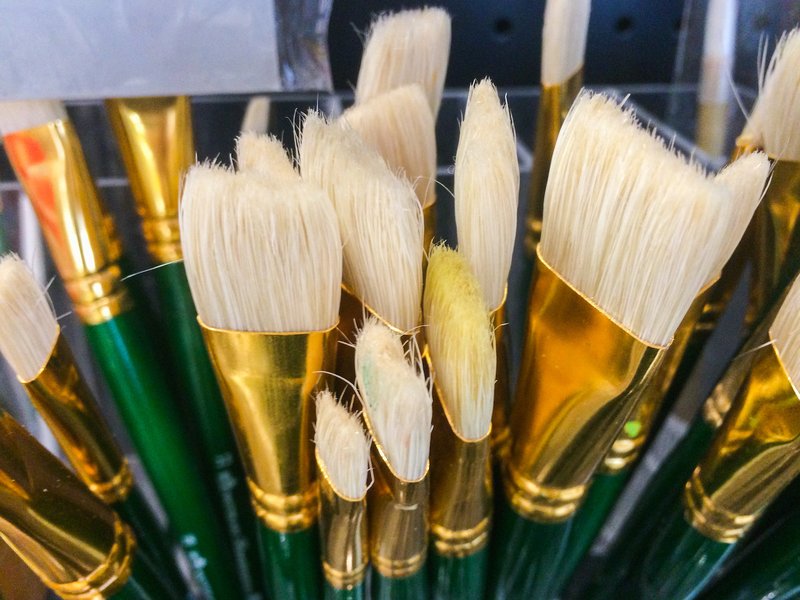
When bristle worm populations crash, it can lead to serious consequences for marine ecosystems. You might be wondering what causes such a decline. Is it pollution, predators, or maybe even climate change? In this article, we’ll dive deep into the world of bristle worms, exploring why their populations crash and what that means for the ocean’s health.
The Role of Bristle Worms in Marine Ecosystems
Bristle worms, or polychaetes, are more than just creepy-crawly creatures. They’re crucial for nutrient cycling in marine environments. Picture them as the clean-up crew of the ocean floor. They break down organic matter, turning it into nutrients that other marine life can use. This process helps keep the ecosystem balanced.
Additionally, bristle worms are a primary food source for various fish and crustaceans. Without them, you could imagine a ripple effect: fewer worms mean less food for other marine life. This could lead to a decline in species that depend on them for survival. If the bristle worm population dips too low, the entire food web could suffer.
In essence, these worms are like the foundation of a house—if the foundation crumbles, everything built on it becomes unstable. That’s why monitoring their populations is so crucial for marine biologists and ocean enthusiasts alike.
Common Causes of Bristle Worm Population Declines
Several factors can lead to a dramatic drop in bristle worm populations. Understanding these causes is essential for marine conservation efforts. Here are a few main culprits:
- Pollution: Chemical runoff, plastic waste, and other pollutants can wreak havoc on the delicate balance of marine ecosystems.
- Climate Change: Rising ocean temperatures can affect the habitats where bristle worms thrive, making it harder for them to survive.
- Overfishing: With too many fish being caught, the natural predators of bristle worms can become imbalanced, leading to population surges or crashes.
- Habitat Destruction: Coastal development and changes in land use can destroy the ecosystems these worms rely on.
Each of these factors contributes to a challenging landscape for bristle worms. It’s like trying to play a game of Jenga while someone keeps removing pieces—you know the tower is likely to fall eventually.
The Impact of Pollution on Bristle Worms
Pollution is a serious concern for many marine species, including bristle worms. When harmful chemicals enter the ocean, they can have devastating effects on aquatic life. Heavy metals, pesticides, and plastics can accumulate in the sediment where bristle worms live.
When worms consume contaminated sediment, they absorb these toxins, which can be harmful or even lethal. Think of it like eating a meal that has been laced with poison—you might feel fine for a while, but eventually, your health will deteriorate. When pollution drives down bristle worm populations, the consequences extend far beyond the worms themselves.
The reduction in worm numbers means less organic matter being broken down, resulting in poor water quality and reduced nutrients for other marine life. It’s a downward spiral that isn’t easy to fix.
Climate Change and Its Effects
Climate change is another major threat to bristle worms. With rising sea temperatures, many marine species face habitat challenges. Bristle worms are sensitive to temperature changes; they thrive best within a certain range. When temperatures exceed their tolerance levels, it can lead to stress, reduced reproduction rates, and even death.
Moreover, ocean acidification, a direct result of increased CO2 levels, can affect their ability to build protective structures. It’s like taking away a superhero’s powers—without their protective mechanisms, they become vulnerable to disease and predation.
As the climate continues to change, we need to keep an eye on how it affects not just bristle worms, but the entire marine ecosystem. Their populations serve as important indicators of ocean health.
Overfishing and Its Ripple Effects
Overfishing is a pressing issue that doesn’t just affect fish populations—it has a ripple effect on the whole marine food web. When large fish populations are overfished, their natural predators can become imbalanced. This can lead to an increase in smaller fish and crustaceans that might prey on bristle worms.
Imagine a neighborhood where everyone leaves—what happens to the remaining residents? They’d struggle to adapt, and the entire community would be affected. That’s how bristle worms react to sudden changes in the food web.
The loss of their natural predators can initially seem like a good thing, but it can quickly lead to a decline in their populations once new predators emerge or existing ones become overzealous. The intricate balance of nature can be delicate, and it only takes a few shifts to send things tumbling.
Habitat Destruction and Its Consequences
With the growth of coastal cities and industries, habitat destruction is rampant. Wetlands, mangroves, and other crucial environments where bristle worms thrive are often drained or polluted. Cutting down these natural habitats is like bulldozing a bookstore to make space for a parking lot—you lose something precious and irreplaceable.
Once these habitats are destroyed, it becomes challenging for bristle worms to find a suitable place to live and breed. Without a home, their populations will continue to decline, affecting everything around them.
Marine conservation efforts aim to protect these essential habitats, but recovering lost ecosystems takes time. Restoration is a lengthy process, requiring dedication and community involvement.
Restoration Efforts and Future Outlook
So, what can be done to help bristle worm populations recover? Various organizations and scientists are working diligently to address these issues. Restoration efforts can include:
- Pollution Control: Implementing stricter regulations on waste disposal and promoting clean-up initiatives can help improve water quality.
- Habitat Conservation: Protecting coastal ecosystems from development ensures that bristle worms have a safe place to thrive.
- Public Awareness: Educating people about the importance of bristle worms and marine life can inspire action and change.
It’s important to remember that while the situation might seem dire, there are still steps we can take to restore balance. With collective action and a commitment to preserving our oceans, we can help ensure that bristle worms—and the entire marine ecosystem—can bounce back.
Bristle worm populations are vital to the health of our oceans. A crash in their numbers signals a larger problem in marine ecosystems that could affect countless other species. From pollution and climate change to overfishing and habitat destruction, the challenges they face are significant.
But by taking steps to protect our oceans and support conservation efforts, we can help stabilize bristle worm populations and, in turn, the health of marine life overall. Let’s work together to keep our oceans thriving and ensure that these remarkable creatures can continue to do their important work. After all, a healthy ocean means a healthy planet for all of us.

